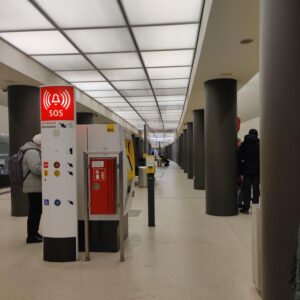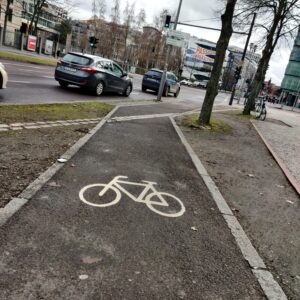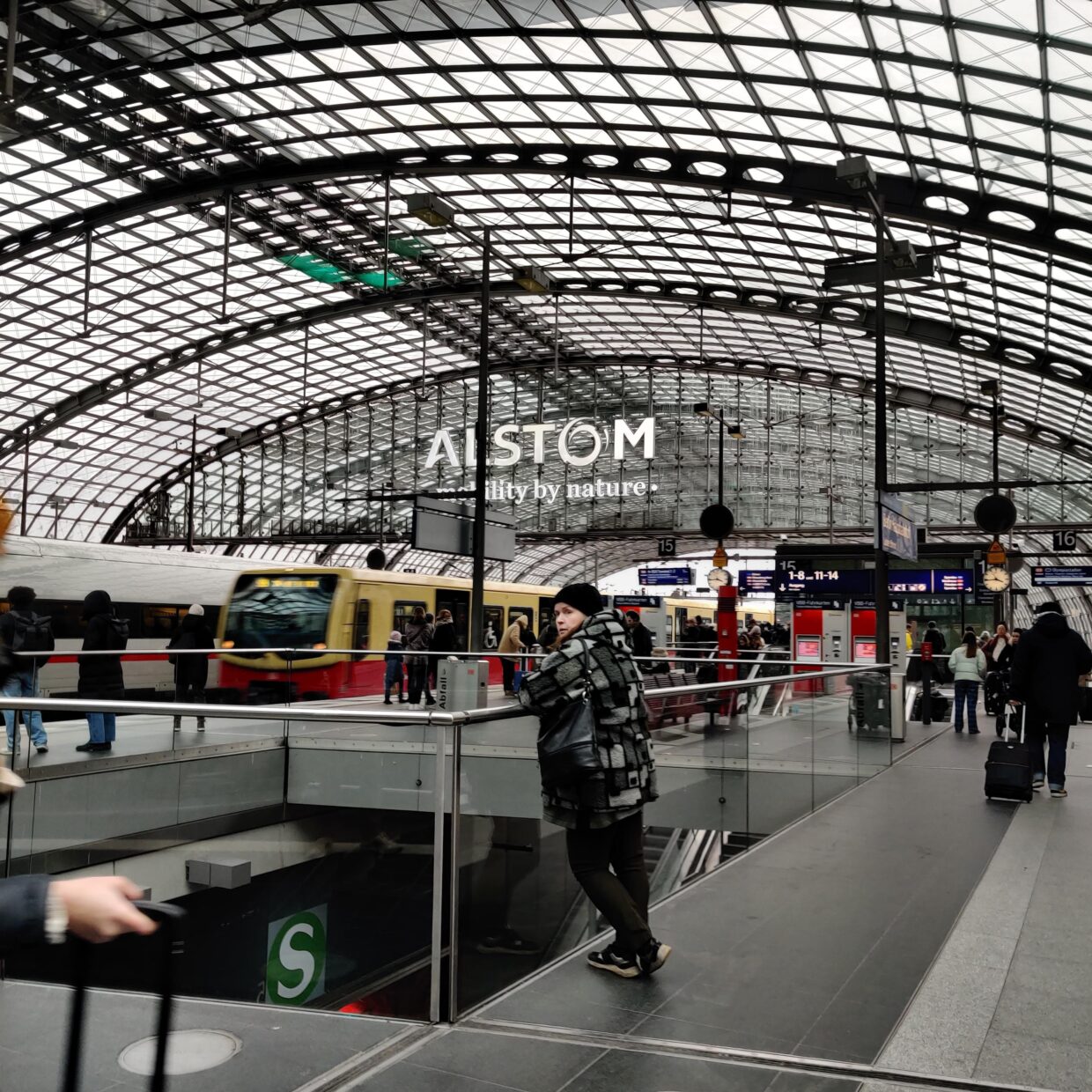Hello! In this final blog post, I will be sharing about the connections between the research I conducted and existing literature. My research is focused on transportation motives in Germany. I wanted to get a deeper understanding of the German perspective relating to all forms of transportation but especially an emphasis on public transportation (PT). My research was conducted in two cities Berlin and Bremen, both were fairly large cities with lots of walking traffic, bicycles, vehicles, and PT.

Existing literature suggests that a major development in both urban infrastructure and policies have made it extremely easy for individuals in Germany to take part in public transportation. By improving walking facilities to transit stations it has contributed towards reducing traffic and increasing transit ridership (Sarker et al.,2020). In all of the cities we visited during our trip to Germany it was very aware that sustainable transportation was commonly used based on the accessibility to bike lanes, walking paths, and PT stations. The use of cars was very prevalent as well, however based on my findings from the surveys, 70% of people used PT or other sustainable transportations as a form of commute. This was a major indicator that cars were not preferred as the main form of transportation for individuals.

Research conducted similarly to mine was based in the US, But I was able to make connections with the research by focusing on factors that affect people’s transportation preferences, and comparing these factors in different cities in Germany. I specifically did this by identifying reasons for using sustainable modes of transportation. I wanted to gain more insight on rider characteristics based on distance, total hours traveled, age, etc. It was very interesting to hear from different people such as students, mothers, fathers, etc. on the reasons for their preference on transportation modes. In my research I knew that a lot of the reasons were tied to accessibility, sustainability, and affordability (Yanar, 2020). My findings align with current research suggesting that individuals in Germany are aware of sustainability when choosing their forms of transportation for commuting (Sarker, 2019). Many of these choices are easily considered because of the policies and infrastructure introduced within Germany. There has been a great push for sustainable and accessible public transportation. Recently, Berlin has been ranked as #1 for the world’s best cities for public transit. Based on both my surveys, previous literature, and personal experience, it is no surprise that Berlin earned this ranking.
I greatly appreciated this exchange and enjoyed reading all of the responses to the different blogs. It has been incredibly knowledgeable to be able to read everyone’s different experiences in the UAE. I have gained knowledge on new perspectives on both US and German culture. I think that my research that I conducted can relate to both the US and to the MENA region due to reliance on cars and other fossil fuel based modes of transportation. With my research and shared knowledge I hope that people from different cultures and perspectives can think twice about their main forms of commuting in relation to sustainability.
References:
Sarker, R. I., Mailer, M., & Sikder, S. K. (2019). Walking to a public transport station. Smart and Sustainable Built Environment, 9(1), 38–53. https://doi.org/10.1108/sasbe-07-2017-0031
Yanar, T. (2023). Understanding the choice for sustainable modes of transport in commuting trips with a comparative case study. Case Studies on Transport Policy, 11, 100964. https://doi.org/10.1016/j.cstp.2023.100964

shamma April 15, 2023
Hello Kiara,
Thank you for sharing your survey and literature reflection. It was really interesting to hear about your experience and the comparison between your research and the existing literature. Based on my knowledge, people in Europe and Germany specifically rely heavily on walking and public transportation. The infrastructure of the country heavily supports the use of public transportation, which is flexible and covers most of the areas that people aim to reach. Also, the weather in Germany is also a factor that encourages people to walk and use bikes to connect between the PT points. Unlike in the UAE, here our weather is too hot for people to walk, especially in summer when it reaches 50 °C. As you mentioned the facilities available also helped in increasing transit ridership. Focusing on rider characteristics is a great thing as you will be able to, later on, develop the research and understand the reasons that lead different people to use PT. it is also nice that you were able to conduct your research in Berlin which is ranked as the world’s best city for public transit.
What are the most common forms of transportation trains, buses, and trams and which age category did you find most when doing your research? Also, if you were to change something in your research question, what would it be?
Good luck!
Zaina Haj Issa April 16, 2023
Hello, Kiara.
I want to thank you for sharing your experience with us! I enjoyed reading your post. From what I’ve heard from family members that live in Germany, Europe in general heavily relies on public transportation. I think the infrastructure and the weather are major contributing factors to the use of public transportation. While there is a metro in the UAE, specifically Dubai, it does not reach all areas of the city, making it challenging to use constantly. Additionally, the weather in the UAE does not help out at all since it tends to reach over 40 degrees Celsius with horrible humidity. I believe that it’s great that you wanted to look more into the people’s characteristics to help your study. As you mentioned, it gives you more insight and helps us understand the factors as to why people use public transportation.
I would love to know some of the most common characteristics that you found? I am sure cost and affordability was one of them.
Ziwei April 16, 2023
Hello Kiara,
Thank you for sharing your survey and literature reflection. From your blog post, I understand you focus on transportation motives in Germany, especially public transportation in Berlin and Bremen. I completely agree with what you said about sustainable transportation being widely used throughout Germany and most of Europe. It is because of the government’s efforts to promote sustainability and the availability of accessible public transportation that people are aware of the importance of sustainability. Yes, as you mentioned, the middle east relies heavily on cars as well. Despite the fact that both individuals and the UAE government want to create a more sustainable society, I don’t think transportation will be the primary solution given the weather here. But the UAE is making efforts to reduce emissions including increasing reliance on clean energy and boosting energy efficiency etc. Dubai aims to increase the share of clean energy to 29% and the Emirate’s energy demand by 30% by 2030.
Is it possible for countries like UAE to learn from Berlin concerning public transportation when their weather conditions are so different?
Hala Bodaka April 16, 2023
Thank you for sharing your research on transportation motives in Germany. It’s interesting to learn about the emphasis on sustainable modes of transportation in Germany and the infrastructure and policies that support this. Your post made me think about the importance of sustainable transportation and how it can contribute to reducing traffic congestion and air pollution. It’s encouraging to see that many people in Germany are opting for sustainable modes of transportation, and I hope that this trend can continue to spread globally.
I would like to add that according to a study conducted by the International Association of Public Transport (UITP) in 2021, the COVID-19 pandemic has had a significant impact on public transportation ridership worldwide. However, in cities where sustainable modes of transportation were already popular, such as Berlin and Bremen, public transportation ridership has been less affected than in cities where private cars were the dominant mode of transportation. Based on your research, what do you think are the most effective policies and infrastructure improvements that could be implemented in other countries to encourage sustainable transportation and reduce reliance on private cars?
Fathima Farhana Moyikkal April 16, 2023
Hi Kiara,
Thank you so much Kiara for your insightful post about your research on transportation motives in Germany. It was interesting to read about your research findings and what you observed in Germany during your trip. When I was reading your post, I kept on comparing the UAE’s transportation system to the one in Germany. Unlike in Germany, most people in the UAE prefer cars over public transit as can be seen in the prevalence of cars and traffic in the country. It is great to hear that people in Germany are more conscious about their choice of transportation and the effects it could have on sustainability. I think it is very important that we push countries to implement policies and construct infrastructure that would encourage the population to follow suit. Do you think there are other factors such as transportation fees that could be the reason why people are choosing public transportation and other modes of transport? Again, thank you for your informative post. Take care and I hope you have a good rest of the semester!
Judy Afana April 17, 2023
Hello Kiara
Wow, this blog post is truly intriguing! The quantity of your research and the links you established to previously published works are impressive. It’s reassuring to see that Germany is moving in the correct heading concerning sustainable forms of transportation and that her endeavours are proving to be fruitful. The fact that cost, sustainability, and accessibility were considered to be such important elements in people’s transportation preferences piqued my curiosity in particular. It seems reasonable that individuals will utilise sustainable forms of transportation more frequently if they have simple and inexpensive access to them.
I also agree with your statement that your research has applications to the US and the Middle East and North Africa. The facts confirm that our dependence on vehicles and other non-renewable energy source-controlled methods for transportation is an overall issue, and it is urgent that we as a whole make a move to tackle it. I believe that your research might be incredibly beneficial in motivating individuals to think more carefully about their transportation choices and take the environment into consideration. Reading your blog article was a lot of fun, and I learned a lot about environmentally friendly transportation in Germany. We value the expertise and research you have shared with us. Do you have any suggestions for the next studies in this field that can improve our comprehension of transportation preferences?
Rakshan Wazir Badshah April 18, 2023
Hello Kiara: We appreciate you sharing your survey results and reflections with us. We value your thoughts on this subject very much. You cited a significant improvement in urban infrastructure as well as laws that have made it quite simple for people in Germany to use public transit. The examples you gave are, in my opinion, highly accurate and informative. This generation must embrace sustainability in order to literally protect future generations from any major catastrophe, whether it be caused by natural calamities or human actions. To my astonishment, I read multiple stories about how many people do not require automobiles because of sustainability. To my surprise, I was able to understand that many people still prefer to utilize the public transportation system instead of their own cars, even if they must go across great distances. The only reason I find it unexpected is that, despite Dubai’s efforts to promote sustainable transportation, the hot climate makes it unlikely that it will actually take place.
Even though transportation is one of the leading causes of pollution today, why do you think Germany is still struggling to keep up with being among the top 10 countries who are sustainable? (Germany ranks 10)
References:
e.on. (2021, November 23). The 10 most sustainable countries in the world [web log]. https://www.eonenergy.com/our-blog/10-most-sustainable-countries-in-the-world.html.
TheTransporter Packers and Movers January 14, 2025
When it comes to courier charges from Bangalore to Hyderabad, the fees can change based on several factors, including the package’s weight, size, and the specific service you opt for. Usually, express delivery services are more expensive than standard ones, and there can be considerable differences in pricing among various courier companies.
Leonard Church December 16, 2025
Each high score in Dinosaur Game feels earned, built from patience, focus, and countless restarts after sudden, unforgiving mistakes!